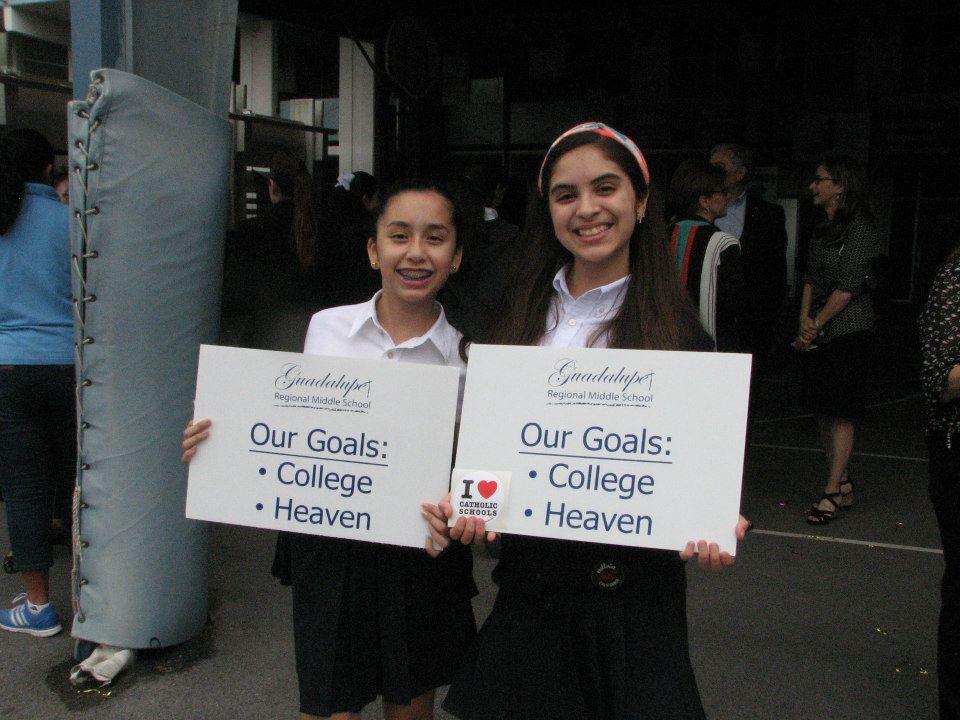For kids from one side of the "border," Catholic schools are a way to get at opportunities they might miss otherwise, and for all students, they're a place to learn about and develop their common values and beliefs.
Written by: Andrea Cisneros
On a map, a border is a hard line. That makes sense - it's supposed to be a mark upon the Earth. Stick your feet in one place, and you're in one nation. Stand to the right, and you stand in another country.
But in real life, the map's hard line becomes a gradient. At least that's so in the Rio Grande Valley, a region of Texas stretching from its southernmost tip up the north bank of the Rio Grande for about one hundred miles, and in Brownsville, the Valley's largest city.
Here, Spanish is about as common as English - it's hard to say for sure because the Valley's other prominent dialect, Spanglish, makes a fuzzy linguistic venn diagram. I often heard my students use sentences like: "Oye, pregunta a tu mam√° if you can come over to my house." Signs saying, "Aceptamos pesos" - We take pesos - are not uncommon, especially downtown. There's lot of Mexican food but not much Tex-Mex (yes, though both delicious, those are different things).
 For many Brownsville families, the border is a delay, a line to wait in when they make their weekly pilgrimages to visit their tíos and abuelitas on the other side. A good number of the students at St. Joseph Academy, the Catholic high school in Brownsville, cross for school every day. If the blending of cultures wasn't interesting enough, complex economic issues shape life in the Valley, where the gap between the poor and the well-off is particularly wide.
For many Brownsville families, the border is a delay, a line to wait in when they make their weekly pilgrimages to visit their tíos and abuelitas on the other side. A good number of the students at St. Joseph Academy, the Catholic high school in Brownsville, cross for school every day. If the blending of cultures wasn't interesting enough, complex economic issues shape life in the Valley, where the gap between the poor and the well-off is particularly wide.
Into this mix come Catholic schools. In the Valley, Catholic schools are places where students learn to navigate the gradient. They learn about the wider world without ever having their own heritage denigrated. English class is just as important here as it is anywhere else - not more, and not at the expense of the students' home language (whether it's Spanish or Spanglish). For kids from one side of the socioeconomic spectrum, Catholic schools are a way to get at opportunities they might miss otherwise, and for all students, they're a place to learn about and develop their common values and beliefs.
Catholic schools are critical in the Valley because they both are and aren't part of the gradient. They thoroughly reflect their community as a place of "both/and" and in-between; a place of both constant change and deep roots. At the same time, Catholic schools here represent that which is constant: family, service, faith, and hope. They are founded on, foster, and thrive on the interconnection between all persons and all peoples, regardless of their home language (or languages) or on which side of a line they stand.
Catholic schools — in the Valley and everywhere else — form their students into the fullest and Truest expression of who they are. From the mix of influences, options, challenges, and demands comes a young person defined by faith, principles, and their connection to their neighbor. They can navigate the gradient because they themselves are solid.
 Alliance for Catholic Education
Alliance for Catholic Education
